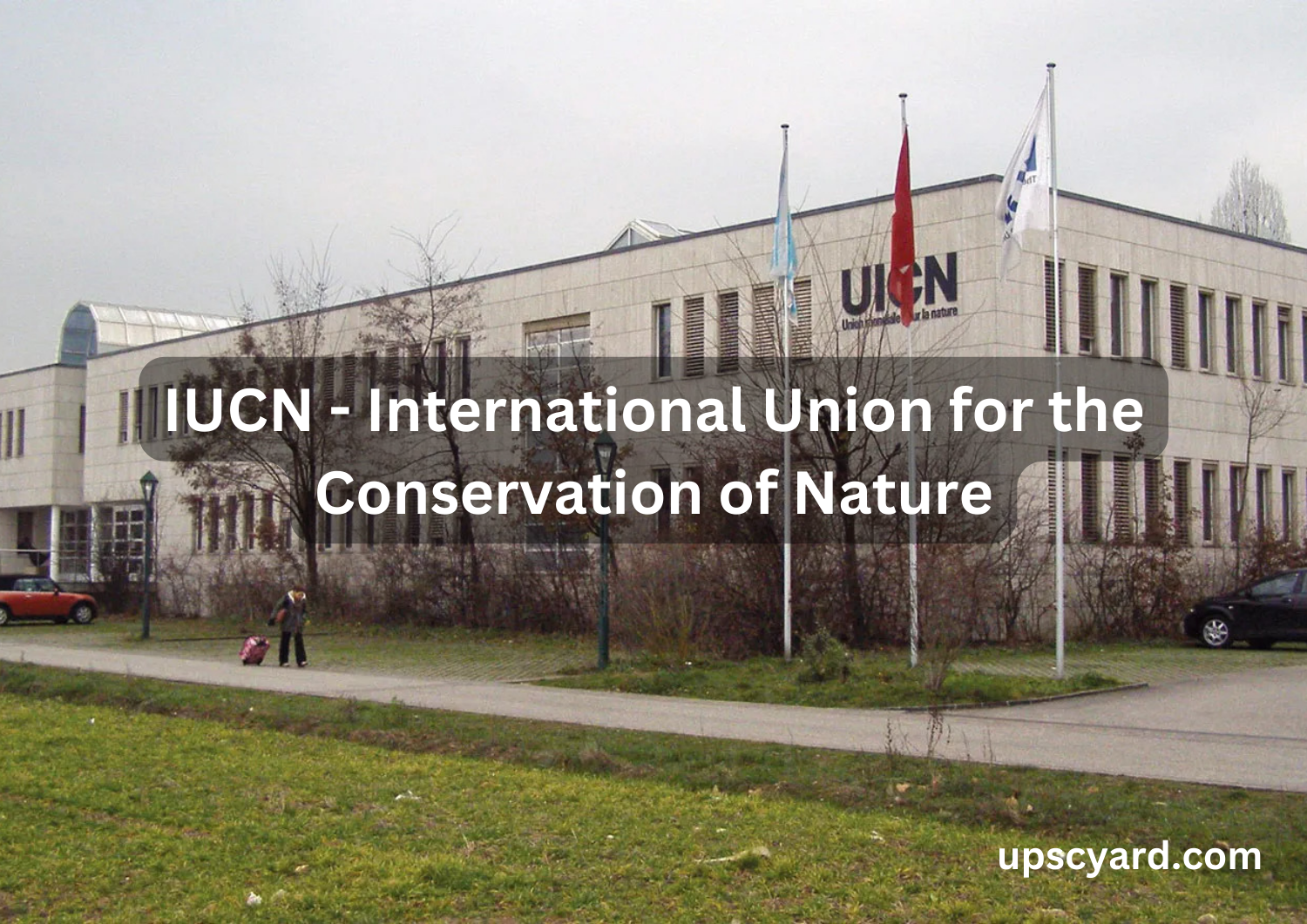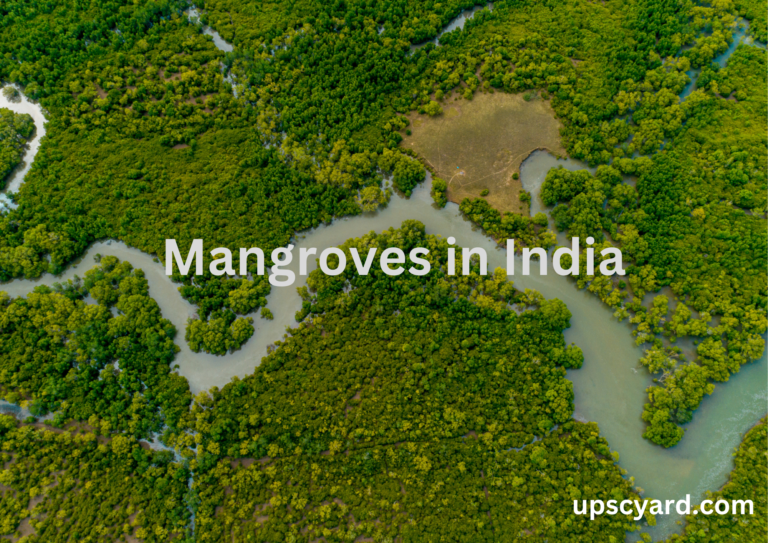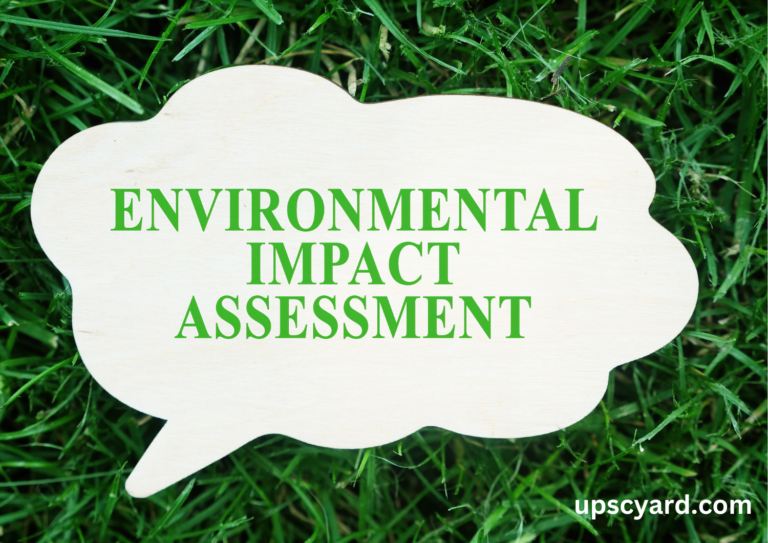The International Union for the Conservation of Nature (IUCN) plays a pivotal role in assessing and categorizing the conservation status of plant and animal species worldwide. This system, known as the IUCN Red List, employs a set of quantitative criteria to evaluate the risk of extinction for numerous species.

In addition to the IUCN Red List Categories and criteria, it’s essential to understand the broader significance and impact of the International Union for the Conservation of Nature (IUCN) and its efforts in global conservation:
The IUCN’s Role in Conservation: The IUCN, established in 1948, is one of the world’s most influential organizations dedicated to conservation and sustainable development. It brings together governments, NGOs, scientists, and experts to address pressing environmental challenges. Their mission is to promote and support the conservation of nature and biodiversity worldwide.
Global Conservation Database: The IUCN Red List is more than just a system of categorization. It serves as a comprehensive global database of species, continually updated and expanded to encompass various taxonomic groups, including mammals, birds, plants, and marine species. This database is a valuable resource for scientists, policymakers, and conservationists.
Species at Risk: The IUCN Red List plays a critical role in highlighting the species that are most vulnerable to extinction. By categorizing species as Critically Endangered, Endangered, and Vulnerable, it identifies those in urgent need of conservation action. This information informs governments, conservation organizations, and the public about where efforts are most urgently required.
Policy and Conservation Action: The IUCN’s work goes beyond categorizing species. It provides scientific assessments and recommendations for conservation action. These assessments influence policies and guide the allocation of resources toward protecting biodiversity. Governments and organizations rely on IUCN’s expertise to shape their conservation strategies.
Monitoring Progress: The IUCN Red List is not a static document but an evolving tool for tracking changes in the status of species. Conservationists use it to assess the effectiveness of their actions and adapt their strategies accordingly. Long-term monitoring allows for assessing whether a species is moving away from the threat of extinction or further towards it.
Ecosystem Conservation: While the IUCN Red List focuses on individual species, the IUCN’s work extends to conserving entire ecosystems. This holistic approach recognizes that biodiversity protection involves not only safeguarding individual species but also their habitats, interactions, and the health of the ecosystems they inhabit.
Public Awareness: The IUCN Red List, with its simplified categories, helps raise public awareness about the plight of threatened species. By highlighting the status of iconic animals like tigers, elephants, and pandas, it encourages global citizens to take an interest in and support conservation efforts.
Challenges and Opportunities: The IUCN Red List continually faces the challenge of assessing an ever-increasing number of species, which requires substantial resources and expert contributions. Additionally, climate change and habitat destruction present new threats to biodiversity, making the IUCN’s work more critical than ever.
In summary, the IUCN and its Red List provide an invaluable framework for assessing the conservation status of species, guiding conservation efforts, shaping policies, and promoting public engagement in the protection of our planet’s biodiversity. It serves as a testament to the global community’s commitment to preserving our natural heritage.

Here’s an overview of the IUCN Red List Categories, which provide a clear understanding of a species’ extinction risk:
- Critically Endangered (CR): Species in this category face an extremely high risk of extinction due to substantial population declines of 80% or more over the last decade (or three generations), a current population size of fewer than 50 individuals, or other critical factors.
- Endangered (EN): Species designated as Endangered have a very high risk of extinction, primarily due to rapid population declines of 50% or more over the past ten years (or three generations), a current population size of fewer than 250 individuals, or other significant threats.
- Vulnerable (VU): Vulnerable species are at significant risk of extinction, mainly due to rapid population declines of 30% or more over the previous decade (or three generations), a current population size of fewer than 1,000 individuals, or other pertinent factors.
- Near Threatened (NT): This designation is applied to species that are on the verge of becoming threatened or could meet the criteria for threatened status in the near future.
- Least Concern (LC): Species categorized as Least Concern are considered widespread and abundant, following thorough assessment.
- Extinct (EX): The Extinct category is applied to species where the last individual has died or where no individuals have been recorded despite systematic and appropriate surveys.
- Extinct in the Wild (EW): Species in this category survive only in captivity or as artificially supported populations well beyond their historical geographic range.
- Data Deficient (DD): This category is used for species with insufficient data regarding their risk of extinction. Consequently, a comprehensive assessment cannot be conducted, and it does not describe their conservation status.
- Not Evaluated (NE): This category encompasses the vast number of species described by science, approximately 1.9 million, that have not yet been assessed by the IUCN.
The IUCN system employs five quantitative criteria to evaluate the extinction risk of a particular species, considering factors like the rate of population decline, the geographic range, existing population size, habitat restrictions, and the likelihood of extinction in the wild. Through this comprehensive approach, the IUCN Red List offers a valuable tool for assessing and addressing the conservation status of global biodiversity.
Recent Developments in IUCN
In recent developments, the International Union for Conservation of Nature (IUCN) has made significant contributions to the field of conservation. Here’s a roundup of some current events and updates:
- New Additions to the Red List: The IUCN’s Red List of Threatened Species welcomed three medicinal plant species from the Himalayas. Fritillaria cirrhosa, Meizotropis pellita, and Dactylorhiza hatagirea are now classified as “vulnerable,” “endangered,” and “critically endangered,” respectively. These plants are crucial to the biodiversity of the Himalayan region, spanning China, Sikkim, Afghanistan, Nepal, India, and Pakistan.
- Climate Change Gender Action Plan: On July 21, 2022, the IUCN, in collaboration with the Ministry of Climate Change of the Government of Pakistan, launched Pakistan’s inaugural Climate Change Gender Action Plan (ccGAP). This plan underscores the importance of gender-responsive actions in addressing climate change and its associated challenges.
- Space Technologies for Conservation: To utilize space technologies for the monitoring and protection of natural World Heritage sites, the IUCN and the International Centre on Space Technologies for Natural and Cultural Heritage (HIST) signed a Memorandum of Understanding on July 7, 2022. This partnership aims to enhance conservation efforts through advanced technology.
- BIODEV2030 Fiji Project: The Fiji Ministry of Environment and the IUCN Oceania regional office collaborate on the BIODEV2030 Fiji project. This initiative underscores the importance of biodiversity and environmental conservation in the Pacific island nation.
- Kigali Call to Action: The conclusion of the IUCN Africa Protected Areas Congress (APAC) saw the endorsement of the Kigali Call to Action by over 2,400 delegates. This call emphasizes the commitment to safeguarding protected areas and natural landscapes on the African continent.
- Endangered Monarch Butterfly: The iconic migratory monarch butterfly, renowned for its remarkable 4,000-kilometer annual journey across the Americas, has been listed as “Endangered” on the IUCN Red List of Threatened Species. Habitat loss and the impacts of climate change have significantly affected this fascinating species.
- Aravalli Biodiversity Park: In a notable conservation achievement, the Aravalli Biodiversity Park in Gurugram, Haryana, has been designated India’s first “other effective area-based conservation measures” (OECM) site. This recognition highlights the park’s role in preserving biodiversity.
- Tuna Species on the Path to Recovery: During a world convention, the IUCN updated its Red List with a focus on saving endangered species. Encouragingly, due to the implementation of fishing quotas, several tuna species show signs of recovery. This serves as a beacon of hope for the conservation of marine life.
IUCN In 2020
The International Union for the Conservation of Nature (IUCN) made a sobering declaration, listing 36 species as extinct. This revelation underscores the urgency of global conservation efforts and highlights the devastating impact of habitat loss, pollution, climate change, and over-exploitation. Here’s a closer look at some of the species that were declared extinct:
1. Freshwater Fish Species of Lake Lanao: The IUCN declared 15 freshwater fish species endemic to Lake Lanao and its outlet in the Philippines as extinct. These species, unique to this particular ecosystem, faced severe challenges due to habitat degradation and overfishing.
2. Central American Frog Species: Three frog species native to Central America also made the grim list of extinctions. The decline of amphibian populations is often linked to habitat destruction, disease, and pollution, which have taken a toll on these sensitive creatures.
3. Lost Shark: The Lost Shark, previously listed as critically endangered and possibly extinct, was officially declared extinct. This is a stark reminder of the vulnerability of marine life and the urgent need for ocean conservation.
4. Macadamia Species: Three Macadamia species from the protea family, known for their beautiful South African flowering plants, were declared extinct. This loss underscores the impact of habitat destruction and deforestation on plant diversity.
5. Asian Oak Species: The IUCN declared nine Asian oak species extinct. Oaks are critical to forest ecosystems, providing food and habitat for various wildlife. The loss of these species is a concerning ecological shift.
6. Freshwater Dolphins: Perhaps one of the most heart-wrenching entries on the list is declaring all five freshwater dolphin species as extinct. This includes the Ganga River Dolphin, Amazon River Dolphin, Indus River Dolphin, Irrawaddy Dolphin, and Tucuxi. These unique aquatic mammals, adapted to their specific river habitats, have been severely impacted by habitat alteration, pollution, and bycatch.
Conservation and Hope: While the loss of these species is distressing, it also serves as a poignant call to action. Conservation efforts are essential to protect endangered species and prevent further extinctions. Initiatives such as habitat restoration, wildlife sanctuaries, and stricter regulations on over-exploitation of resources can make a difference. Additionally, public awareness and education play a vital role in garnering support for conservation endeavours.
It’s worth noting that while the declaration of extinction is a sombre acknowledgement, it’s not the end of the story. Conservationists work tirelessly to preserve and restore habitats and protect vulnerable species. The IUCN’s Red List, which highlights species at risk, is a critical tool in guiding these efforts and drawing attention to the urgent need for global conservation.
M.C.Q.
1) Endemic plant and animal species present in the biodiversity hotspots.
2) Threatened plant and animal species.
3) Protected sites for conservation of nature and natural resources in various countries.
Select the correct answer using the codes given below:
A) 1 and 3 Only
B) Only 2
C) 2 and 3 Only
D) All of these
Answer:- B
1) IUCN is an organ of the United Nations and CITES is an international agreement between governments
2) IUCN runs thousands of field projects around the world to better manage natural environments.
3) CITES is legally binding on the States that have joined it, but this Convention does not take the place of national laws.
Select the correct answer using the code given below.
A) 1 and 3 Only
B) 2 Only
C) 2 and 3 Only
D) All of these
Answer:- C




